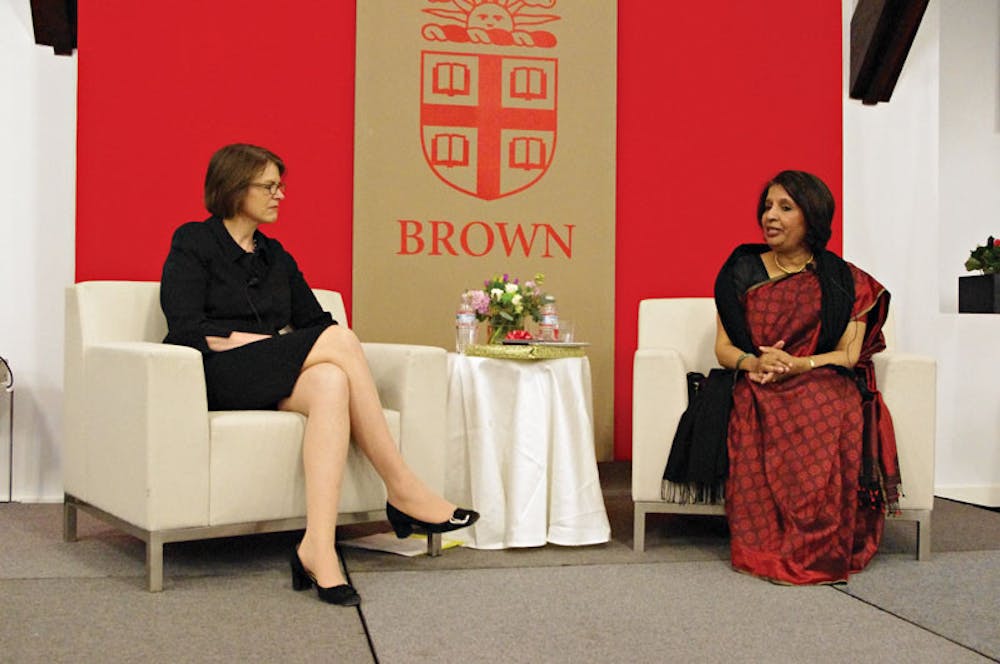As India and South Asia increase their geopolitical influence, both the country and the region will receive increased attention from the United States while China grows more powerful, said Nirupama Rao, India’s ambassador to the United States, in a seminar late Monday afternoon.
The seminar was the first of spring 2013 for the Brown-India Initiative and was chaired by President Christina Paxson. The Initiative itself was inaugurated last September.
Paxson began the lecture by introducing Rao as a “leading woman in India,” citing her strong background in foreign affairs.
Rao’s lecture, titled “America’s ‘Asian Pivot:’ the View from India,” addressed how the United States is increasing its focus on South Asia’s developing economic and political climate.
“There is no denying that the United States seeks to engage with the Asian region much more robustly than in the past,” Rao said. Citing maritime and economic collaborations, Rao said “cooperation between India and the United States has deepened.”
India’s “relationship has grown in strength and substance” with its Southeast Asian neighbors, Rao said, adding that India’s foreign policy has changed from one of “looking east to one of engaging east.”
“And then there is China,” Rao said. India, along with the rest of the world, will have to contend with China’s growing influence, she said.
Though the countries have “significant overlapping interests,” Rao said India’s “bilateral relations with China” are targeted toward achieving shared prosperity.
After Rao’s remarks, Paxson began a question and answer session by inquiring about India’s climate change initiatives.
Students, fellows and faculty members then asked their own questions, which addressed a broad range of topics including cyber security, gender equality and deeper examinations of China’s rise in power.
Mali’o Kodis ’14 said there was a “very impressive community turnout” at the lecture and added that she generally “found (the lecture) very informative.” But Rao seemed to be “addressing problems without speaking to specific solutions,” Kodis said.
Mike Johnson ’13 said he “thought (Rao) spoke very diplomatically” and may have “danced around a few key issues.” But Johnson added that he “kind of expected that” from an ambassador.
The Brown-India Initiative “is an interdisciplinary hub for the study of contemporary India,” according to the Initiative’s website.
“Our focus is on modern India and on the social sciences” with a smaller emphasis on the humanities, said Ashutosh Varshney, professor of political science and director of the Brown-India Initiative.
The Initiative’s emphasis on modern India stands in contrast to many other programs that are “devoted primarily to the humanities,” and tend to focus on the classical, medieval, and ancient periods, Varshney said.
The Initiative’s three main purposes are to promote research about India, increase the number of classes taught about India and engage the public sphere in both India and the United States, Varshney said.
He said the Initiative seeks to “build bridges with other departments which have an interest in India,” citing collaboration with Brown’s English department and the Department of Modern Culture and Media.
“We’ve had remarkable support from the University,” Varshney said.

ADVERTISEMENT




